Explore Edo (Modern Tokyo)
The city of Edo (modern Tokyo) on the central east coast of Honshu became the capital of Japan in 1603, when the Tokugawa shogunate, or military government, chose the small castle town as their administrative seat. Over the next centuries, Edo grew up around its castle core into a thriving urban center, with a population of over 1 million people, by 1750. Unlike Kyoto, which remained the Imperial capital and center of traditional court culture until 1868, Edo became a thriving commercial center with a flourishing popular culture, patronized largely by the merchants, artisans and other townspeople who had originally served the military but increasingly dominated the cultural landscape. The city was renamed Tokyo (“Eastern Capital”) in 1868, when the feudal military government was overthrown, and Imperial rule restored. Today Tokyo is the most populous metropolitan area in the world and remains the heart of Japanese popular culture.
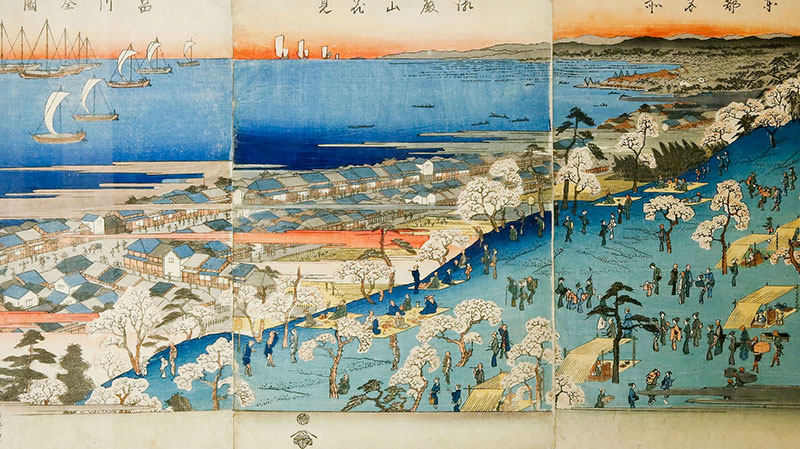
Cherry Blossom Viewing at Mount Goten by Utagawa Hiroshige, c. 1832-1855
People in the capital, as they do today, sought out the beauties of nature nearby, especially during seasonal festivities. They celebrated the ephemeral beauty of blooming cherry trees by gathering with family, friends and work colleagues for picnics under the blossoms. This scene by Utagawa Hiroshige (1797–1858) depicts cherry blossom viewing (Japanese: hanami) at Mount Goten, or Palace Hill, in modern Shinagawa. Overlooking the Meguro River to the south, it was one of the most popular sites for hanami during the Edo period, and still is today.
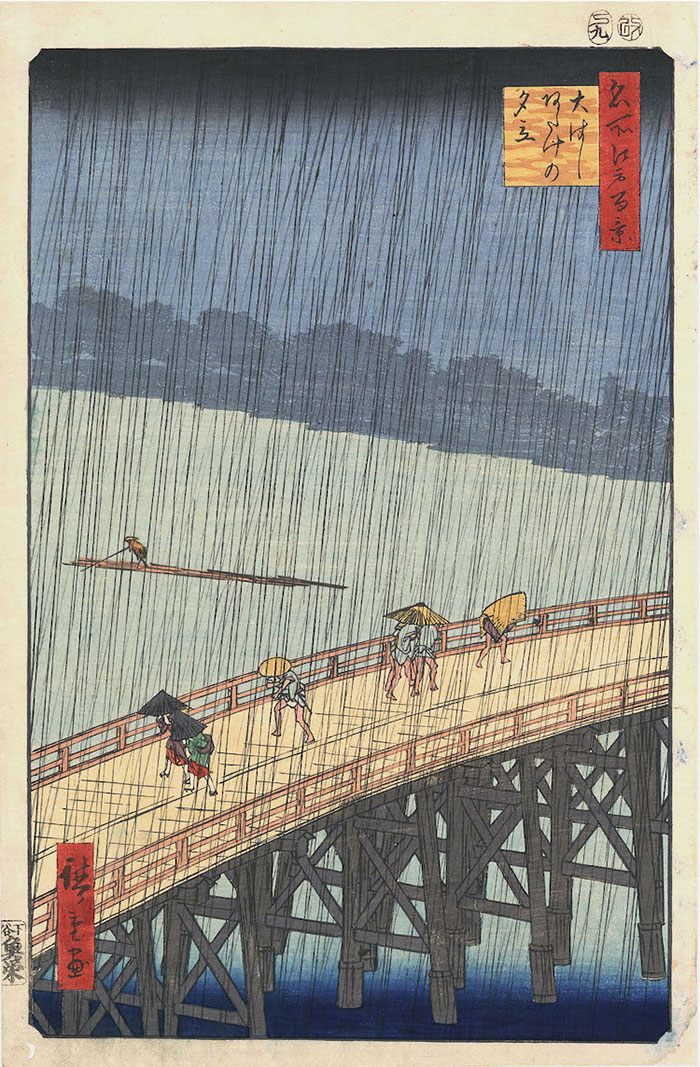
Sudden Shower Over Shin-Ōhashi Bridge, No. 52 from the series One Hundred Famous Views of Edo by Utagawa Hiroshige, 1857
In this print, No.52 from the series One Hundred Famous Views of Edo by Utagawa Hiroshige (1797–1858), pedestrians caught in a late summer downpour cross the Shin-Ōhashi Bridge – one of the many bridges spanning the Sumida River. The power of nature is clearly a central theme, although this image shows people on a man-made structure so it is not a landscape in the traditional sense. By depicting rain in fine black lines cutting downwards through the composition, Hiroshige allows us to almost sense its force as it lashes down on the poor hunched pedestrians below. The bold design and atmospheric intensity have made this print one of Hiroshige’s most celebrated images and inspired Vincent van Gogh to create a copy in oils thirty years later.
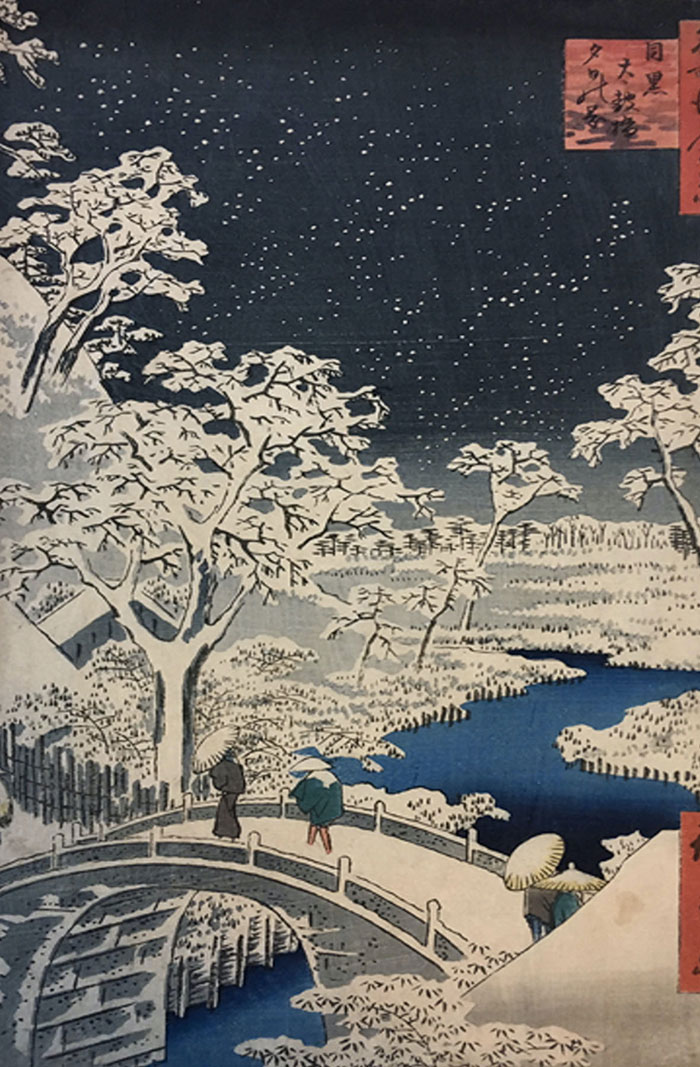
Meguro Drum Bridge and 'Setting Sun' Hill, No. 111 from the series One Hundred Famous Views of Edo by Utagawa Hiroshige, 1858
Drum Bridge, a rare arched stone bridge in Meguro, led to Ryūsenji, a popular Buddhist temple. The military government built Ryūsen Temple to honor the wrathful Buddhist deity, Fudō-myōō, and ensure the protection of the regime and the capital. Hiroshige’s snowy scene exudes peace and tranquility, with a gently darkened sky suggesting twilight, and the white of the paper left deliberately uncolored to convey a landscape blanketed in snowy silence. As with many of his scenes of Edo, he portrays this corner of the city with great skill and emotion. Judging by the number of prints in this series, he enjoyed rendering his hometown of Edo so much that he could not stop at 100!
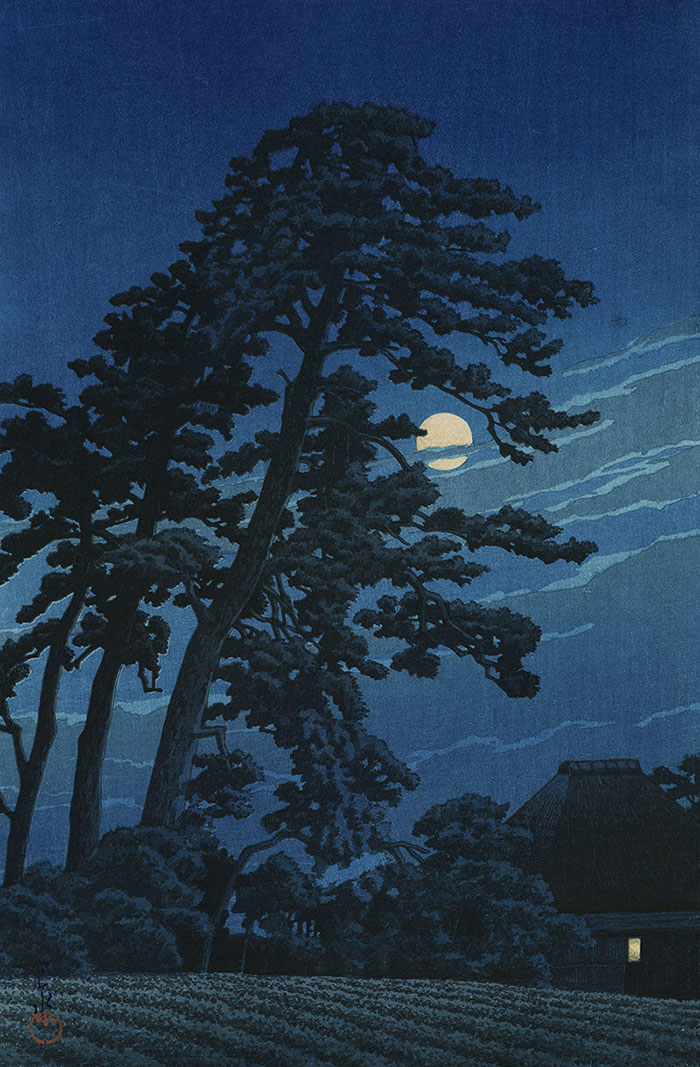
Moon at Magome from the series Twenty Views of Tokyo by Kawase Hasui, 1930
Following in the tradition of Hokusai and Hiroshige, who were famous for their numbered series of landscape prints, Kawase Hasui created his own from 1925 to 1930, including Twenty Views of Tokyo. Here, in this serene portrayal of Magome, he depicts towering, ancient pine trees against a deep indigo evening sky. From behind the trees, the full moon softly illuminates wispy bands of clouds, its radiance echoed at the lower right by the warm light shining from the small window of a farmhouse. The trees themselves seem like guardians of the serenity, protectors of the peace.
Traveling in Japan Today
Japan's Railway System
Japan’s railway system is world-renowned for its punctuality and has garnered a well-deserved reputation for being efficient, clean, and safe. It also boasts an extensive network of train lines operated by multiple companies working in conjunction that crisscrosses the nation and provides reliable transportation to even the most remote and unique locations in Japan. The country’s leading railway company, Japan Railways (JR) offers not only local trains that travel short distances but also operates the Shinkansen (bullet train), high-speed express trains that can traverse from one end of the country to the other at speeds up to 320 km/h.
#ASMR Japan | Train Ride Journey
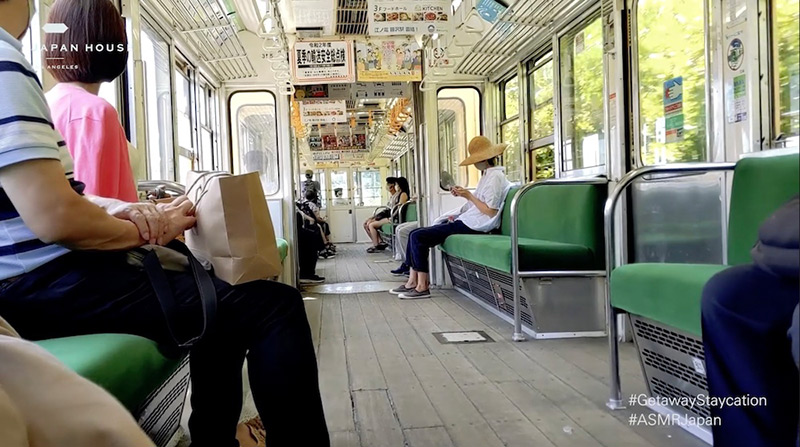
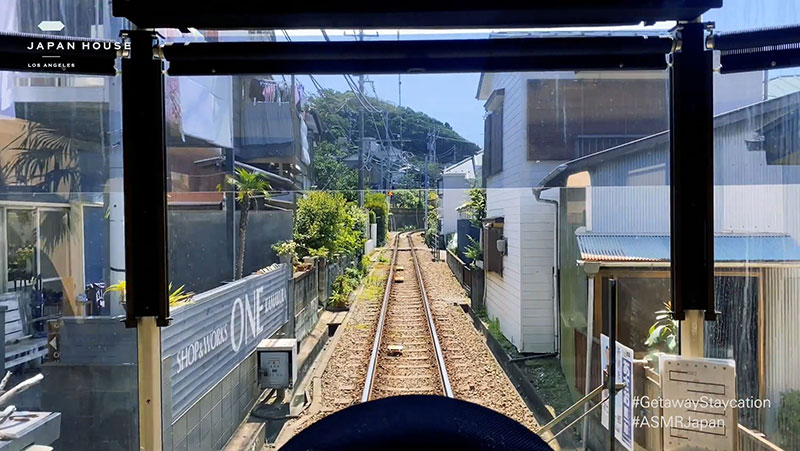
#ASMR Japan | Shibuya Crossing
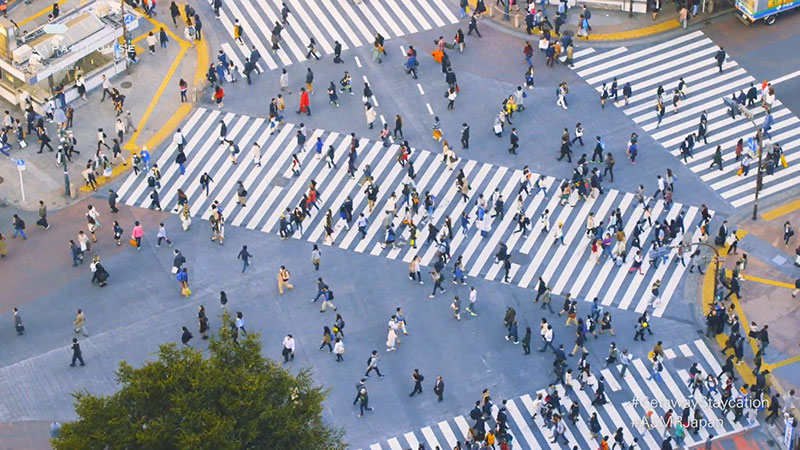
The heart of Tokyo’s youth culture is arguably located in the district of Shibuya, a bustling mecca of shopping and entertainment. At any given time of the day, Shibuya is packed with swarms of people, often traversing through the iconic intersection known as the Shibuya Crossing. The Shibuya Crossing has made its appearance in films, magazines, and blogs due to the astounding number of people who cross the intersection daily, with an estimated 1,000 to 2,500 people making their way across every two minutes at its busiest times, enough to fill a football stadium in one day.
Explore Each Region
Return to Part 2
Nature: The Beauty of the Japanese Landscape
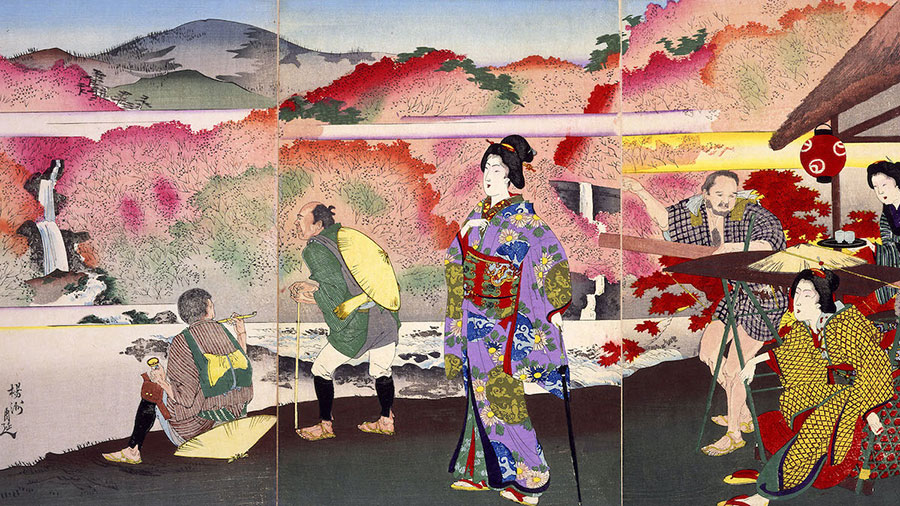
Main Exhibition & Virtual Tour
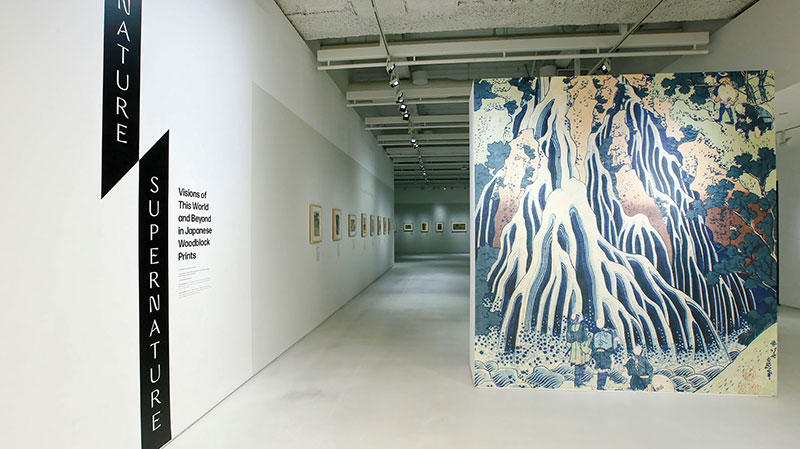
*Note: Japanese names in this exhibition are written in the traditional Japanese order, with the family name first and personal name last. However, if an artist has come to be known by a single name, (e.g., Hokusai and Kunisada) that name will be used for subsequent mentions.

